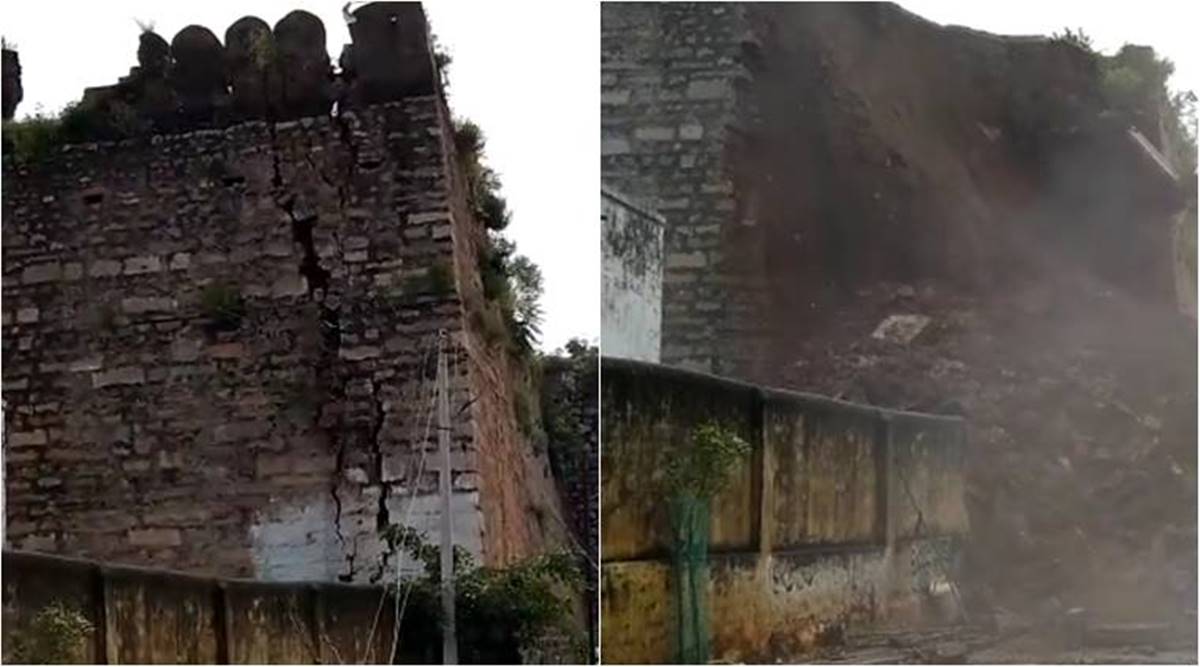The Quila Shapur fort has been at the receiving end of official apathy and neglect for years, and now questions are being raised on its safety itself.
A portion of the outer boundary wall of a 17th-century fort in Telangana’s Jangaon district collapsed Thursday morning following heavy rains. A video of the collapse of the 30-feet-tall wall has gone viral online.
The Quila Shapur fort, about 95 km away from Hyderabad, was built by a local leader Sarvay Papadu or Sardar Sarvay Papanna. The fort has been at the receiving end of official apathy and neglect for years, and now questions are being raised on its safety itself.
“People have been living in row houses very close to the wall. Around 7.30 am, the wall collapsed onto three houses fully damaging them. Around 40 people have been evacuated and moved to nearby government high school,” said K Ashok Kumar, sub-inspector Raghunathapally. “No one was injured in the incident.”
According to him, cracks were developed on the wall in June during heavy rains and as water continued to seep in, it collapsed. Some repair works were taken up by authorities recently, he said.
K S Sreenivasa Raju, IAS officer and the Director (in-charge) of the Department of Heritage Telangana, has ordered field inspection by a team led by the deputy director(engineering) and called for a report on the incident. “Once I have the report with me, I can share the details with you,” he said when contacted.
Repeated calls to B Nagaraju, deputy director(engineering) went unanswered.
According to the department’s website, Sarvay Papa Rayudu of Quilla Shapur was a famous local leader who had revolted against the Golconda rulers and defied the Mughal-imperial authority with his activities centered around Tatikonda, Shahpur, Golconda, Bhuvanagiri, Warangal, Elgandal and Kaulas, etc. The fort is constructed on a square plan with massive bastions at four corners of the fortifications.
The co-convenor of INTACH (Indian National Trust for Art and Cultural Heritage), recalling her last visit to the fort, said she had noticed a pre-existing crack on the wall and blamed the official apathy for the collapse of the wall.
“There seems to have been a preliminary report on the fort’s condition and about the crack at northern bastion. This was overlooked and the lack of timely intervention led to the collapse,” she alleged. “There seem to have no adequate intervention and the recent torrential rains further weakened the structure constructed with mud, stones, and bricks.”
She further noted that the department has been short-staffed and plagued with an insufficient budget and permanent security for its protected sites and monuments. “The absence of a regular and qualified director has further worsened the situation,” she said.
Source: Read Full Article


